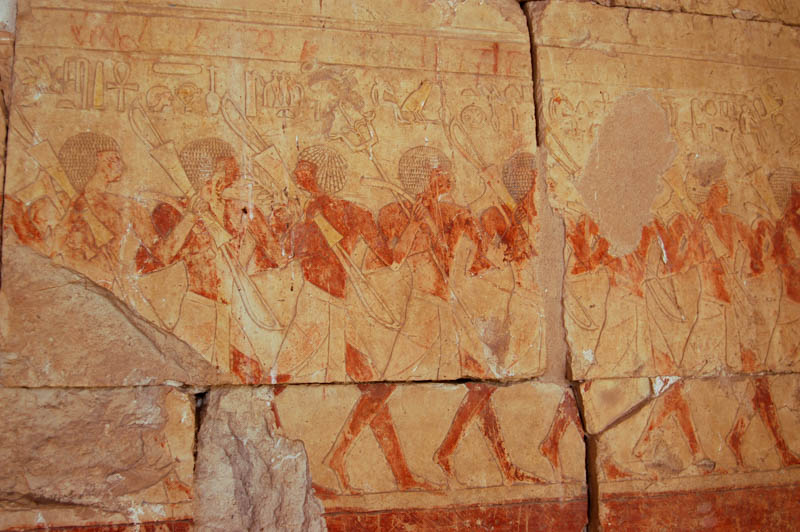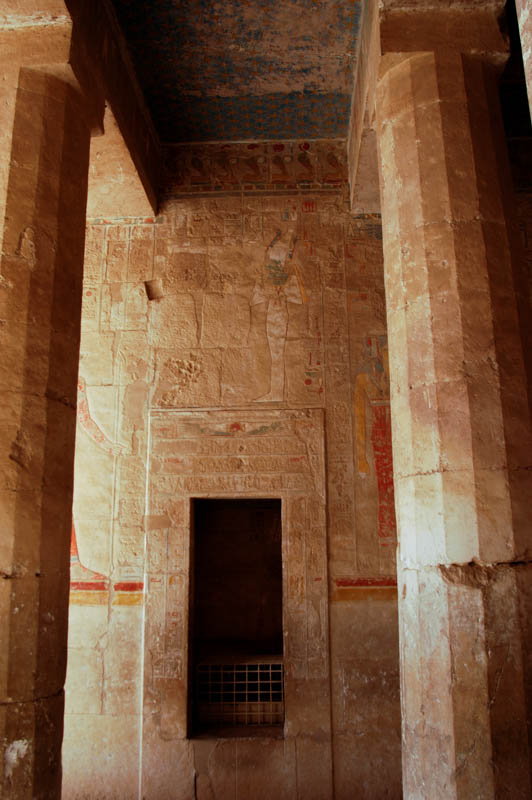Inside the colonnades are reliefs that show the transportation of the two enourmous obelisks (one stands at Karnak, the other in Paris). These are being restored. One the northern side are reliefs of Hatshepsut that have been defaced by Tuthmosis III, who attempted to erase al traces of the woman who usurped his throne for most of his life.


ON the second colonnade are the reliefs of Hatshepsut’s famous trip to Punt. No one is sure where Punt is, exactly, although modern belief is that it is Somalia. Egyptians traveled there to trade and find incense and myrrh. Some archeologists belive that the courtyard was intende as a hypostyle hall and was originally roofed over.
In the temple itself, the sanctuary of Amun is dug directly into the stone of the cliffside and is (at least technically) connected to the Valley of the Kings which lies on the other side of the escarpment. There is a burial chamber there, but it is usually assumed that Hatshepsut was buried in the Valley of the Kings.
The temple not follow the same rules as other temples — it is far different from Karnak and Luxor, or the huge temples of Ramesses II and his followers. Instead of huge pylons and courtyards, then the hypostyle hall and then the inner sanctuaries, Hatshepsut built her temple against the stone wall as a series of levels.
It gets really hot here — even early in the morning in the winter, we were sweating by the time we got to the temple. The gate is far away — a result of security after the 1997 bombing that killed a busload of German tourists — and the curved walls of the wadi capture the morning heat and reflect it back like a huge oven. Our guide, Jamil, compliained that it got hot enough on the upper terraces to melt tennis shoes.
